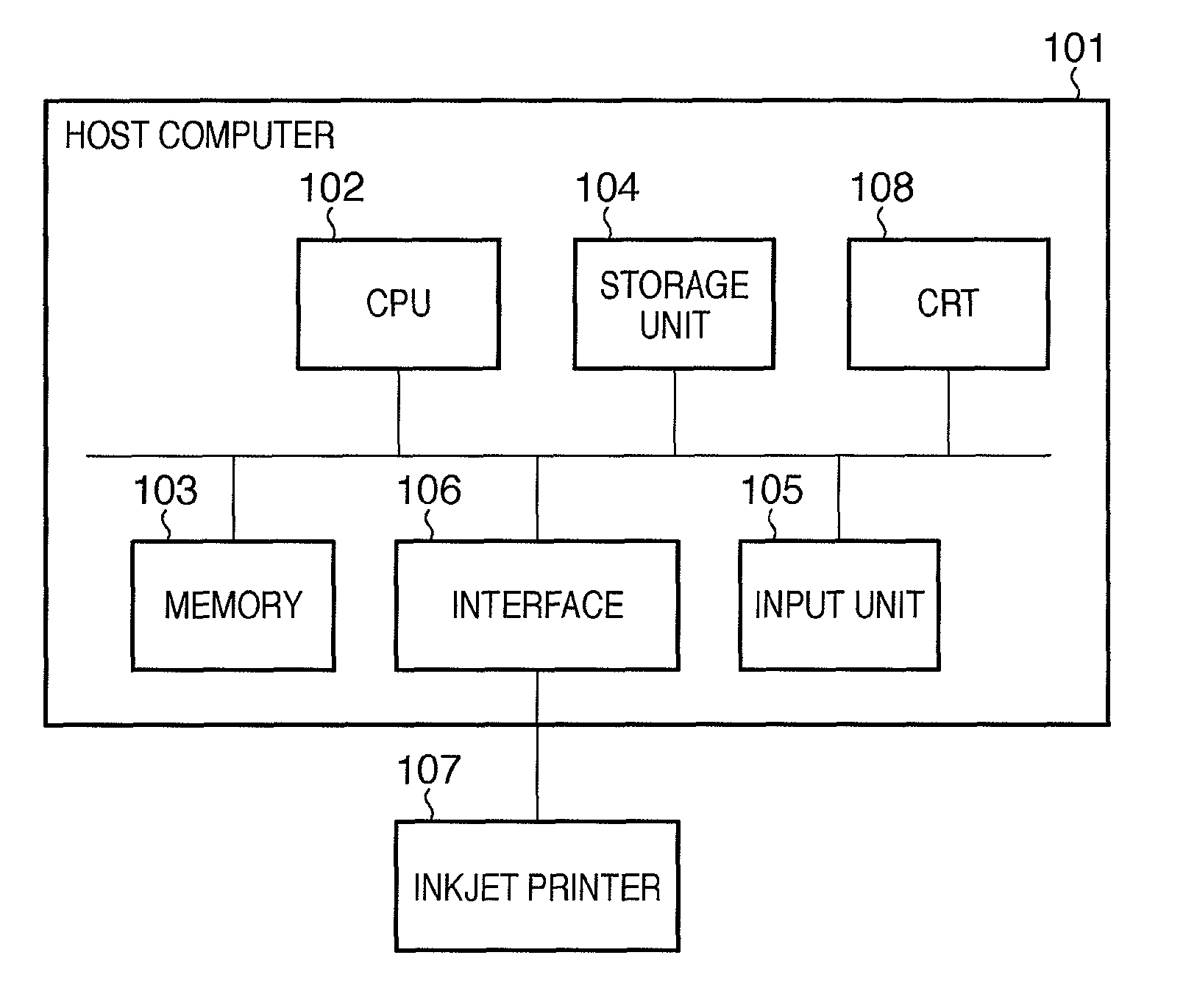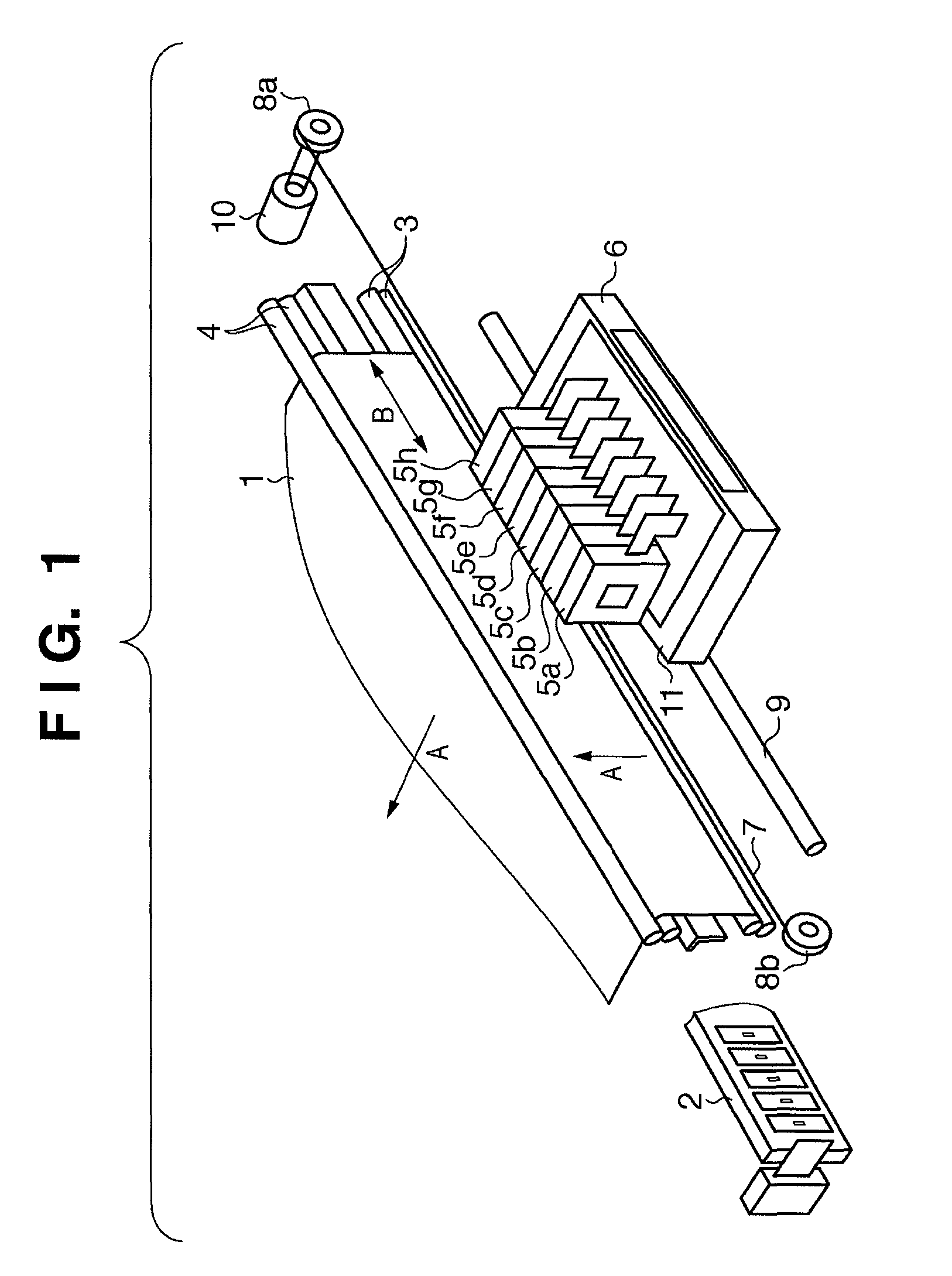Image forming using warm and cold black tone inks
a technology of warm and cold black tone ink and image forming, which is applied in the direction of digital output to print units, instruments, digital computers, etc., can solve the problems of affecting the color balance of the three colors, the relative adjustment of the monochrome image expressed by the achromatic colors such as black and gray, and the imbalance of the three colors
- Summary
- Abstract
- Description
- Claims
- Application Information
AI Technical Summary
Benefits of technology
Problems solved by technology
Method used
Image
Examples
first embodiment
[0043]FIG. 1 is a perspective view showing the main arrangement of an inkjet printer according to an embodiment of the present invention. Referring to FIG. 1, reference numeral 1 denotes a printing medium such as a paper sheet or a plastic sheet. Before the start of printing, a plurality of printing medium 1 are stacked on a cassette (not shown) or the like. When printing starts, a feed roller (not shown) supplies the printing media into the apparatus main body one by one. A first conveyance roller pair 3 and a second conveyance roller pair 4 are arranged at a predetermined interval in almost the vertical direction. Each of the first conveyance roller pair 3 and the second conveyance roller pair 4 is driven and rotated by a corresponding stepping motor (not shown) so as to intermittently convey the printing medium 1 held in the roller pairs in the direction of an arrow A by a predetermined amount.
[0044]Ink tanks 5a to 5h store inks to be supplied to corresponding printheads 11. The ...
second embodiment
[0110]In the gamut for monochrome printing and, more particularly, in a gamut for performing only adjustment of the warm black tone and cold black tone, a chromatic color ink for toning is sometimes used in addition to the warm black tone ink or the cold black tone ink.
[0111]For example, there are reddish and greenish media among a myriad of printing media (printing paper sheets) in the world. Mixing only the warm black tone ink and cold black tone ink does not suffice for generating the warm black tone or cold black tone ink of a monochrome photo and for generating an ideal pure black tone, either.
[0112]In this case, it is necessary to use a chromatic color ink as a toning color material in addition to the warm black tone ink or the cold black tone ink.
[0113]In this embodiment, the user can designate the tint of the printing paper sheet on the background using the slider shown at the lowermost position of FIG. 10. For example, when the slider is located at the center, the printing ...
PUM
 Login to View More
Login to View More Abstract
Description
Claims
Application Information
 Login to View More
Login to View More - R&D
- Intellectual Property
- Life Sciences
- Materials
- Tech Scout
- Unparalleled Data Quality
- Higher Quality Content
- 60% Fewer Hallucinations
Browse by: Latest US Patents, China's latest patents, Technical Efficacy Thesaurus, Application Domain, Technology Topic, Popular Technical Reports.
© 2025 PatSnap. All rights reserved.Legal|Privacy policy|Modern Slavery Act Transparency Statement|Sitemap|About US| Contact US: help@patsnap.com



